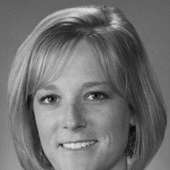- Practices to promote daytime calving (1/17/13)
- Agricultural educational events to be offered (12/27/12)
- Census of Agriculture provides snapshot of farmers and ranchers across the country every five years (12/6/12)
- Proper care needed to maintain effectiveness (11/15/12)
- Agriculture and 4-H erosion reduction in pastures (9/13/12)
- Southwind 4-Hers get reserve champ honors (9/11/12)
- Educational opportunities available for farmers, ranchers (8/23/12)
Does patch burning offer advantages?
Thursday, October 4, 2012
The KSU Bressner Range Unit consists of two-adjacent half sections of native grass near Yates Center, Kan., donated by the Willie J Bressner estate in 1988.
The past seven years, the research project has been focused on "patch-burn" vs. "full-burn" management practices each spring and the resulting cattle performance and plant composition changes. Of the eight individual pastures, four were patch-burned and four were full-burned each April.
The patch burn treatments are implemented on 1/3 of the area each year with the burn cycle being repeated starting at year four. Patch-burning does results in a concentrated grazing area the year of burning.
Stockers grazed from late April to Aug. 15 each year. Stocking rates were 2.7 acres per head utilizing 550- pound calves. Cattle had free access to all areas within each pasture.
Cattle performance results: Since there was no year by treatment interaction the data was analyzed across all years. The greatest cattle gains were achieved in 2009 and 2010 with the lowest in 2007 and 2012. There were no significant differences in average daily gain between the full-burn and patch-burn treatments, or the season-long gains. Cattle grazing on the patch-burn gained 2.44 pound/head/day over the study while the cattle on the full-burn pastures gained 2.42 pounds/head/day; season long gains were 118 and 116 pounds/acre respectively.
Forage composition results: In the full-burn areas the five major native grass species (big bluestem, little bluestem, indiangrass, switchgrass, and sideoats grama) were relatively stable making up between 58-76 percent of the botanical composition during the study. Annual grasses (crabgrass, yellow bristlegrass, and common witchgrass) were generally less than 10 percent of the composition in the full-burn pastures.
After two patch-burn cycles, the botanical composition shifts were similar under both types of treatment. One major change was the forbs tended to increase under patch-burning compared to the full-burn. Sericea lespedeza increased under both treatment types.
The increase in annual grasses the year of the patch-burning was the most dramatic change. However these species declined in the two years following the patch-burn.
Big bluestem, sideoats grama, and forbs remained relatively consitant during the patch-burn cycle; little bluestem and indiangrass recovered following the first burn while switchgrass composition has trended downward.
This information was adapted from the Bressner Field Day proceedings; full articles and research findings are available from the Southwind Extension District-- Fort Scott Office.

